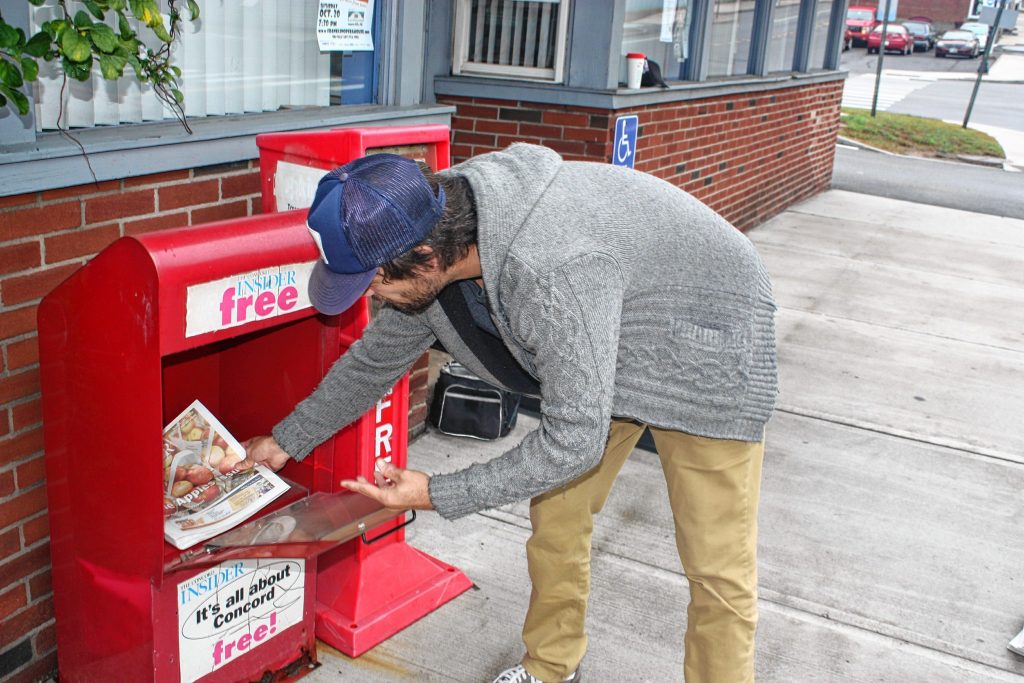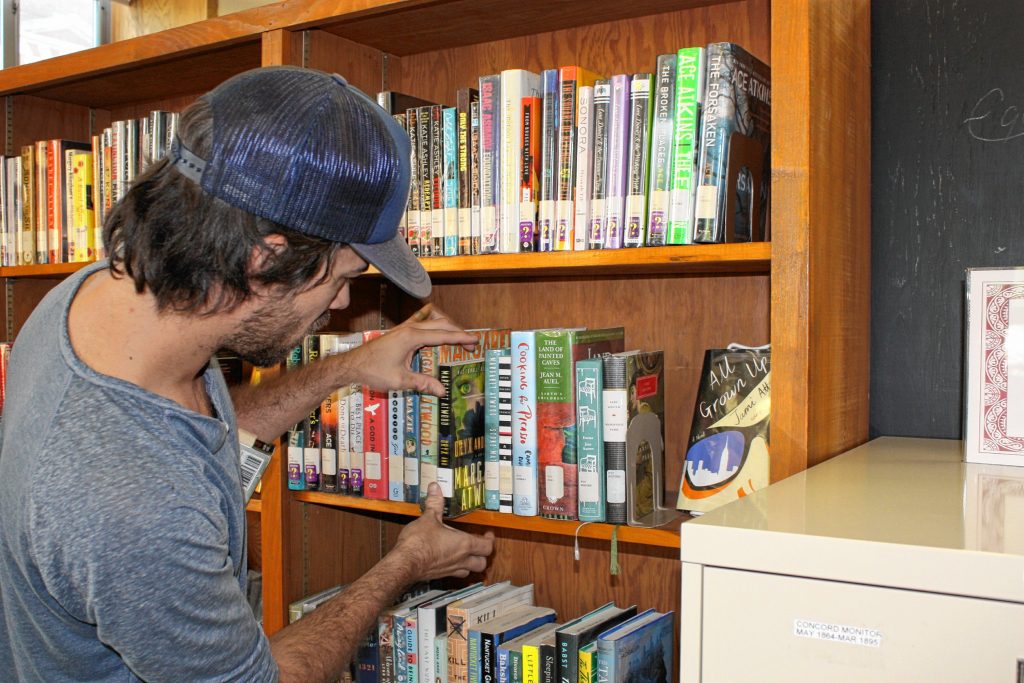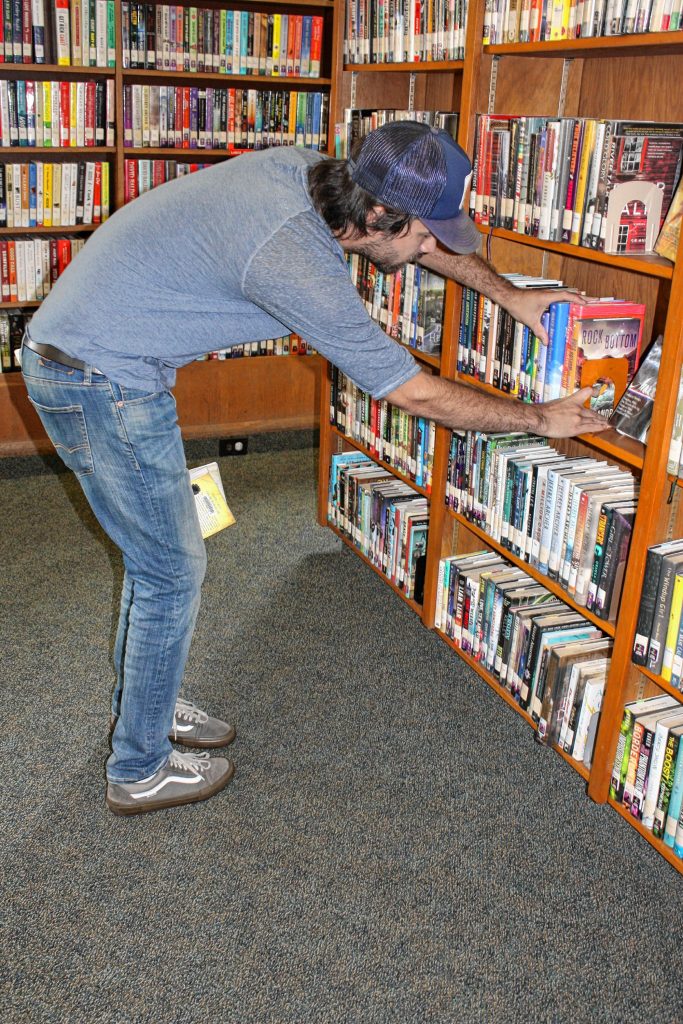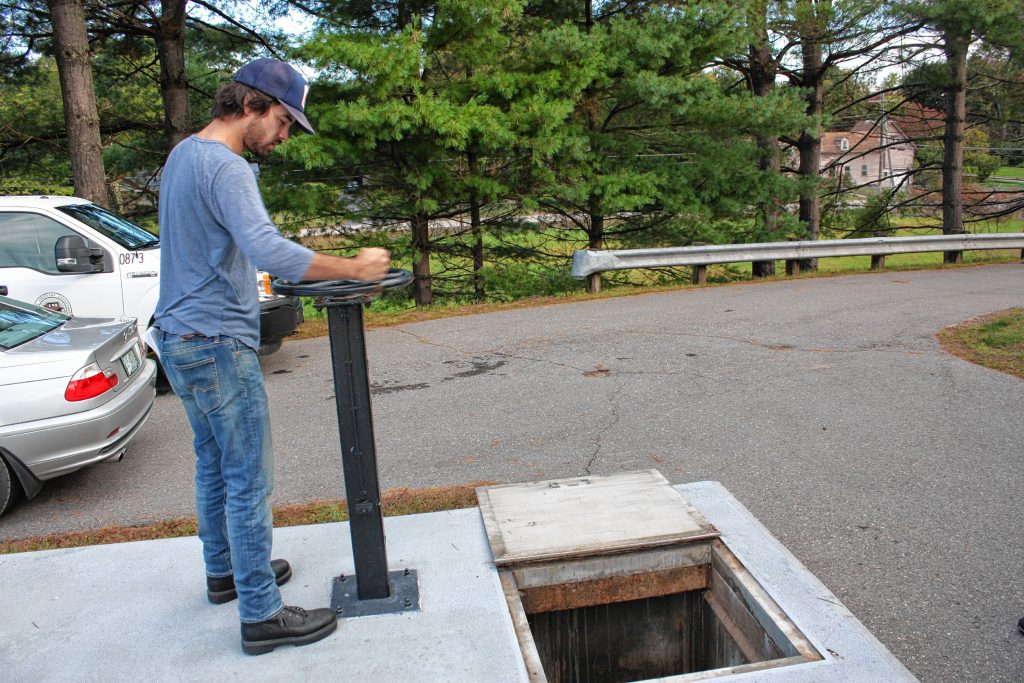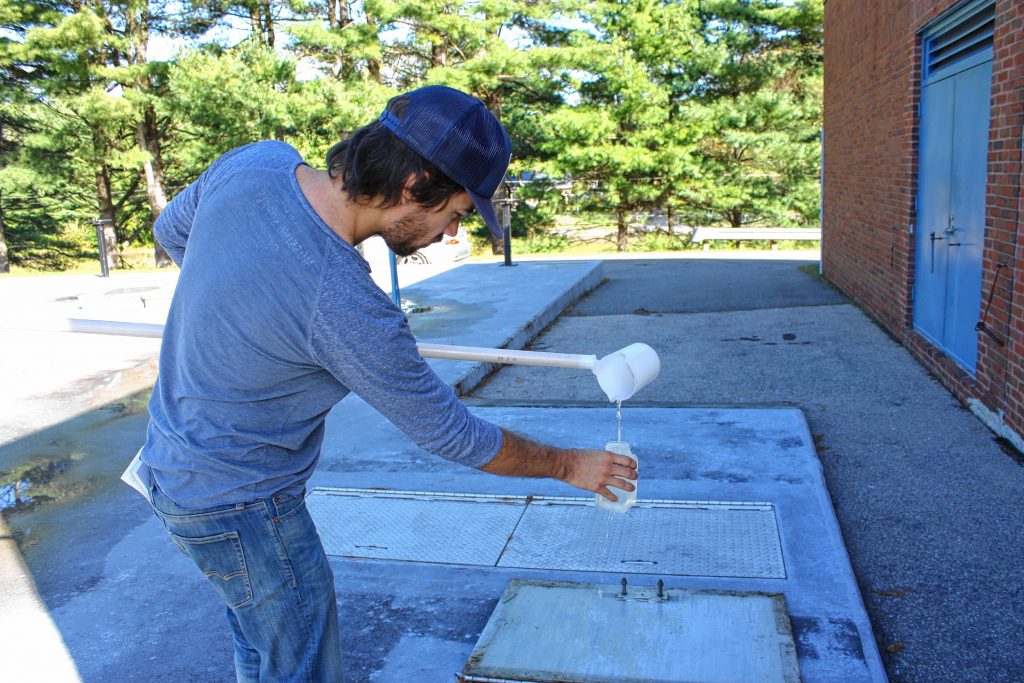I love my job here at the Insider. After all, what’s not to love? I get to spend my days talking to interesting people in the community, writing about concerts and other fun family events, and I even get to eat good food and drink nice beers every once in a while.
But, like anything else you’ve done for weeks and months and years on end, it loses some of the excitement factor after a little while.
That’s why I decided to get out of the office for a little while and try some new things last week. Obviously I couldn’t forego my Insider duties all week, as I still had to produce this top-notch paper for you, but over the course of a couple days, I got to step in and try three very different jobs within the city.
The goal was simple – I just wanted to try things I’d never tried before, and the more variety, the better. While I originally had grand ideas of attempting five, six, seven or maybe even more jobs, reality sunk in quickly when I realized I still had this 24-page paper to put out by myself, so I ended up narrowing the list down to three.
The jobs that made the cut included delivering stacks of the Insider to some of the newsstand boxes around the city, performing various tasks at the water treatment facility, and putting books back on the shelves and checking out some books at the library.
While these weren’t necessarily the most dangerous, dirty or thrilling jobs imaginable, they were certainly pretty different from reporting, writing and editing, so I was game.
Here’s how the week went:
‘Insider’ delivery
I figured that since I already come up with the story ideas, conduct the interviews, write the stories, take the photos, put everything on the pages and send those pages to the press, I might as well take a shot at delivering the final copies of the Insider to their destinations, too. If nothing else, I would get to say that I took care of every element of the operation for this one week, with the exception of printing the plates and running the press.
It started with a trip downstairs to ask Leann Hewitt, single-copy manager, if I could even do this. She informed me that the delivery drivers would be happy to skip a few stops on their routes to allow me to make the drops for them. Then she sent me a list of four locations I could take – Chief’s Place, Penacook Pharmacy, Cheney’s Apple House Furniture and Subway, all in Penacook.
The distribution of the Insider is a little unusual. If you subscribe to the Monitor and you live in either Concord or Bow, you get your Insider with the Tuesday Monitor. If you don’t, you have to wait until Wednesday, when all the red boxes all over town get filled up. My task was to fill up four of said boxes.
While many of these boxes are filled in the darkness of early morning, I had the luxury of going a bit later, since the businesses on my route don’t even open until 9 a.m. at the earliest.
The main challenge for this job was finding a photographer to capture my delivery skills at 8 a.m. Luckily, my good buddy – and fiercest rival – Ray Duckler, the Yankees-loving, award-winning and extremely talented columnist for the Monitor, lives right around that neck of the woods and agreed to meet me.
My first stop of the day was Chief’s, which has an Insider box right outside the front door. When I got there – about 3 minutes late, which Ray was not shy about pointing out to me – I discovered that not a single copy of the previous week’s issue was left in the box. Someone had even taken the display copy that sits pinned to the inside of the clear-front door. That could only mean we’re pretty well-read at Chief’s, which was comforting.
I had my big bundle with me, along with a simple set of instructions. For this stop, all I had to do was remove any of the old copies, of which there were none, and put the new ones in. It took about 5 seconds total, including slipping one copy into the display position behind the door.
The next stop was just a few hundred feet away, at Penacook Pharmacy. The pharmacy didn’t open until 9, so my instructions were to leave a stack of 12 in a plastic bag right in front of the front door, which was easy enough.
Next was Cheney’s Apple House Furniture, just up the street probably less than a minute away. Again, this was a bag-and-drop job, which I handled with class and dignity.
The last stop was Subway on Fisherville Road. Like Chief’s, Subway has a box outside that’s easy to access at any hour. Sadly, though, this box was nearly full of the previous week’s issue, indicating not many people had taken copies. Maybe Subway just isn’t as popular of a sit-down eatery as Chief’s is – at least that’s what I’m telling myself.
In any event, the whole job – four stops, all in Penacook within no more than a mile of each other – was completed in probably 10 minutes. While this was pretty easy for me, I know that the folks who typically do this job have dozens of stops, and they’re out there in blizzards and rain storms and all of that. I consider myself lucky to have gotten such a decent day – it was humid but not cold or raining – for my delivery route, and I wouldn’t mind doing it again if anyone is ever sick or unavailable.
Water treatment facility
For my second job, I reached out to Chip Chesley, director of the city’s General Services department, to see whether there was anything I could do for the department. After some thinking and checking in with some people, he got back to me saying I could check out the water treatment facility and try a couple different things over there. Having no knowledge of water treatment techniques and having never even seen the building in question, I figured that would be a perfect job for me to try.
The facility is on Hutchins Street, right up against Penacook Lake, which is the city’s drinking water supply.
I arrived at 8 last Thursday morning ready to get a little dirty – I had my jeans and work boots on and everything. The facility is gated off – can’t have random people just wandering in to the entire city’s drinking water supply, I suppose – so I rang the buzzer and said I was with the Insider, which granted me immediate access into the facility.
Once inside, I was given a tour of the facility and told what goes on there. As it turns out, the vast majority of what goes on at the water treatment plant is way over my head – there’s a lot of science, math and engineering involved, and a lot of big-time technical terminology. To be honest, it was a little intimidating and overwhelming to be learning so much so quickly.
At this job, I definitely did a lot more learning than doing. I guess I can’t blame the staff there for being hesitant about turning me loose on the facility – about 4 million gallons of water pump out of there every day going to more than 12,000 service taps, and the whole city drinks and bathes in this water, so you can’t take any chances of contamination just for the sake of an Insider story, no matter how great that story would be.
I learned that the facility has a capacity to treat up to 10 million gallons a day but currently does about 4 million. I learned that the prison is the biggest consumer by far, and that Penacook Lake contains about 4.5 billion gallons, with about 1.5 billion gallons of useable water. It was a day of a lot of staggering, hard-to-comprehed numbers.
The whole process is pretty complex, but it can be broken down into six basic steps: coagulation, where a coagulant is added to screened water to bond to any undesired particles; flocculation, where the water and coagulant are mixed quickly then slowly; sedimentation, where the now-heavy clusters of particles settle to the bottom to be discarded; filtration, where this cleaner water goes through silica and activated carbon filters; disinfecting (or secondary treatment), where sodium hypochlorite, flouride and anti-corrosives are added; and distribution, where the fully treated water is sent out to five storage tanks throughout the city and to individual consumers.
My role in all of this would prove to be pretty minimal. My first task was to turn the wheel of one of sludge pumps. Turning the wheel raised the pipe connected to it until it started spewing gallons of dark-brown (and very foul-smelling) sludge into the basin beneath my feet. It wasn’t glamorous, but it needed to be done. The sludge would then go on to be treated at the city’s wastewater treatment facility on Hall Street.
My next and final task was to take a scoop of water from one of the basins outside and pour that into a container so it could be tested. I was handed a long pole with a cup on the end, which I just dunked in the water then poured that into another cup I was given. The testing would be left to someone actually qualified to test drinking water.
And just like that, my work at the water treatment facility was done. I like to think I did a great job, but I really have no idea.
Library
My final job of the week was stopping by the library to help with whatever they needed. At this job, at least, I was familiar with many of the employees, as I’ve had the pleasure of working with many of them over the years. That put me at ease right away.
On this particular day, there was some shelving that needed to be done – putting recently returned books back in their places on the bookshelves. Nicole Schulze, adult services and outreach coordinator, felt it would be best to have me deal with fiction books only, which are arranged simply by last name in alphabetical order. Nonfiction and reference books use the Dewey Decimal System, which is more complicated and would certainly take a rookie like myself longer to accomplish.
I grabbed an empty book truck (cart) and loaded up some books from a back room and headed over to the fiction section to start putting them back.
There are a few things to look for when doing this. For instance, if one author has multiple books, as is often the case, the books are arranged alphabetically by title, going from left to right. On top of that, when it comes to titles, words like “the” and “a” are always omitted, so, for instance, The Shining would just be considered Shining for the sake of shelving the books. Finally, if there are multiple authors with the same last name, they’re arranged alphabetically by first name.
The first book I had to find a home for was A Rural Affair by Catherine Alliot. This one slotted in one spot to the right of Margery Allingham’s Mr. Campion’s Farewell.
I would be tested a few books later. I had to shelf The Unexpected Inheritance of Inspector Chopra by Vaseem Khan. The challenge was that there were multiple authors named Khan, and this particular Khan had multiple books on the shelf. This meant I had to employ every strategy I was taught – go by first name of the author, omit the “the” from the title and go by title. Ultimately, I put the book to the right of The Perplexing Theft of the Jewel in the Crown by Vaseem Khan and to the left of Falling Sky by Rajan Khanna. Schulze said I got it right, so I felt a nice little rush.
After my shelving was done, I helped “check out” a book, only not really – confidentiality is big in the library world, and they didn’t want to compromise the confidentiality of the patrons by letting the press see what they were checking out, so we did a mock version using a test card the library keeps just to show me how it was done. I scanned the card, scanned the book then swiped the book over a machine that deactivates the security device in the book. Then I checked the book back in and was done.
All in all, I had three very different experiences that were all interesting in their own ways. The whole thing was fun and a welcome change of pace. If you’d like to see my try more jobs in the future, I’d love to hear your ideas. Send suggestions to news@theconcordinsider.com and I’ll see if I can make it happen.

